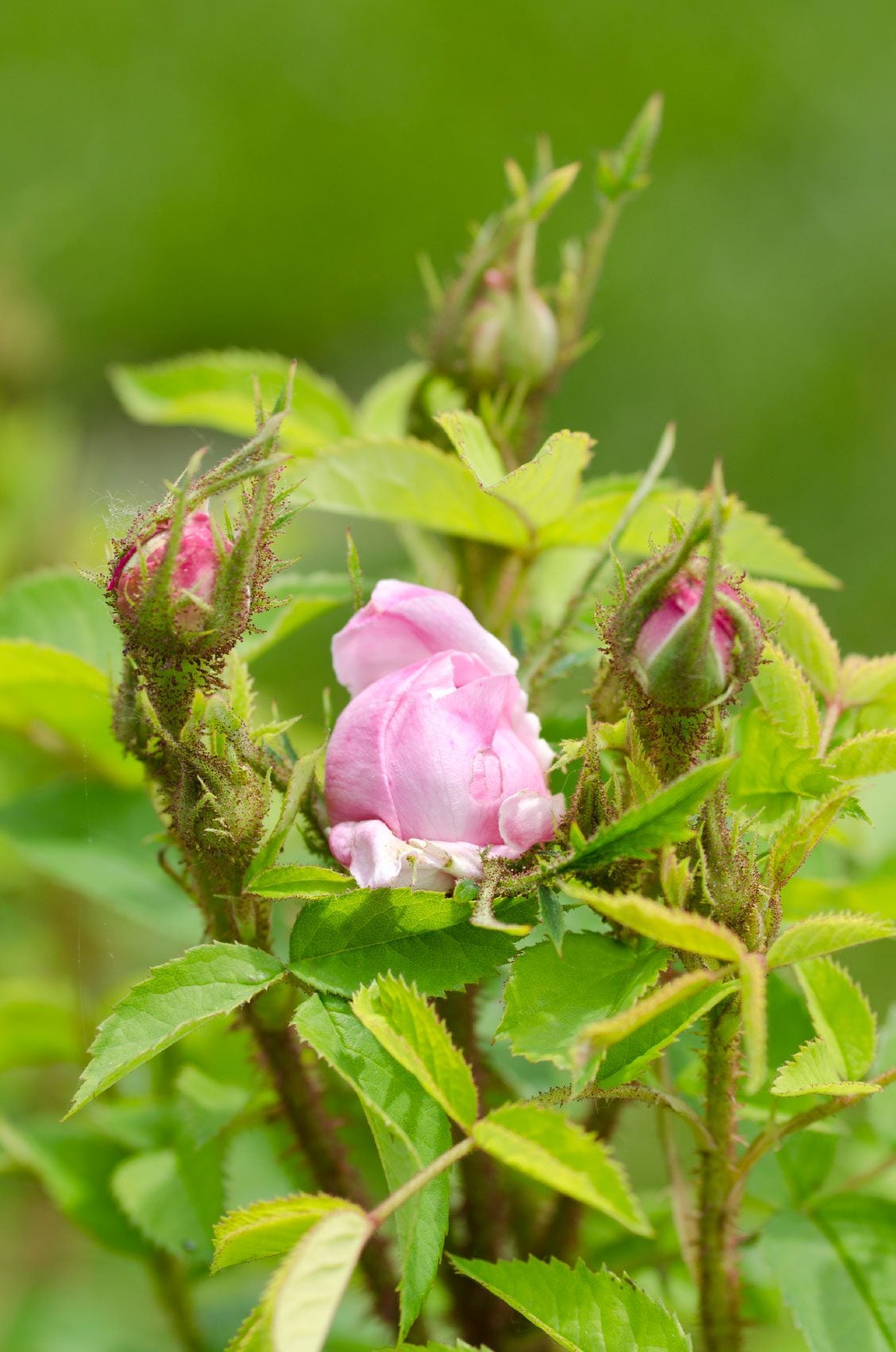Rose Deformity Info: What Causes Deformed Rose Growth


If you've ever come across unusual rose deformities in the garden, then you are probably curious about what causes deformed rose growth. There are several things that can cause the buds, blooms, and foliage to take on a strange deformed or mutated appearance in roses. Read on for more rose deformity info.
Common Causes for Deformed Rose Flowers and Leaves
Most rose deformity in the blooms and sometimes leaves is caused by Mother Nature herself or genetic mutations. Proliferation - Proliferation, or vegetative center, causes deformed rose flowers. This is one of those Mother Nature's Kitchen items. It can occur with many rose bushes, perhaps a bit more with the floribunda roses. There is some school of thought that using high nitrogen fertilizers can bring about an imbalance within the rose bush that will cause the vegetative center. The visual of this one is a mass of green growth coming from the center of the rose bloom. It can look like a knot of green growth and even new leaves coming out of the center of the bloom. The best thing to do is to prune the bloom off down to the first 5-leaflet junction with the cane and let new growth and a new bloom grow out. Genetic mutations - Another of the causes of rose deformities is really just a genetic effect, otherwise known as “an oops of nature.” These may include such things as several leaves growing together to form what appears to be one big leaf or having one bloom growing directly out of the center of a current bloom. Most rose deformities of the foliage can be a result of fungal attacks, insect damage, and viruses. Fungal diseases - Powdery mildew will form a white powdery-like cover on the rose leaves, and even when sprayed and killed, the powdery mildew leaves its mark by creating deformed rose leaves that look crinkled up. Other fungal attacks will change the coloration of the leaves or black spots will be present all over the foliage of the rose bushes, sometimes a burnt orange-looking growth will appear on the foliage. The black spots are caused by the Black Spot fungus, and the burnt orange growth is usually a fungus called Rust. It should be noted that even when the black spot fungus has been sprayed and killed by a fungicide, the black spots on the foliage that had been infected will not go away. However, the new foliage should be free of the black spots if the fungus has truly been eliminated. Pests - Insect attacks can leave buds severely weakened to the point of them simply turning yellow and falling off of the rose bush. A common cause of this is thrips, as they like to burrow into the buds for their nutrition and cause irreparable damage to the buds. In the case of thrips, the best controlling treatment appears to be a systemic pesticide added to the soil around the bush, which is taken up by the roots. It is hard to get at the thrips and some other such insects, as they like to go deep into the buds and canes. Other insect or caterpillar attacks will leave the foliage looking like lace. This is called skeletonizing of the foliage. Methods of treatment are a good insecticide sprayed on the roses at least twice, about 10 days apart. I have experienced bent-over heads of rosebuds. They seem to form normally and then bend over to one side. This condition is called Bent Neck by some Rosarians and can be caused by rose curculios. You will usually notice tiny punctures if this is the case, as they bore in and lay eggs, then leave. They do not actually feed on the rose bush, so they are very difficult to control. The best thing to do is to prune off the bent-over bud and discard it before the eggs can hatch and bring out more of the problem. The Bent Neck problem can also be caused by high nitrogen foliar fertilizers that have been used too often or not enough water uptake by the root system due to insufficient rose bush watering. The water uptake problem is seen more frequently during the hotter growing season. Viral infections - Rose mosaic virus results in oak leaf-looking yellowish markings on the leaves and Rose Rosette causes strange mutated looking, mottled (and sometimes deep reddish) growth. Rose rosette causes growth to deform in such a way that it may also have a broom-like look to it. This is why some folks refer to it as Witches' Broom. Here are some rose diseases and pests for you to check out to learn more:
It helps to identify the problem prior to going at it in one particular fashion that could well miss the mark.
Sign up for the Gardening Know How newsletter today and receive a free copy of our e-book "How to Grow Delicious Tomatoes".

Stan V. Griep contributed to Gardening Know How for many years and has been a Colorado Native Rosarian for over four decades. He is an American Rose Society Certified Consulting Master Rosarian in the Rocky Mountain District, and a member of the Denver Rose Society, the Loveland Rose Society, and the American Rose Society. He is Gardening Know How's in-house expert on all things roses.